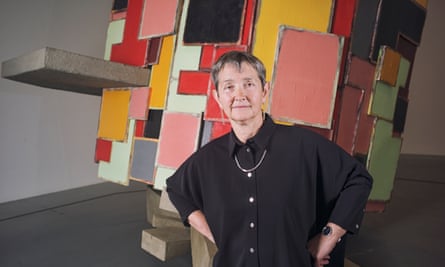The government’s art collection reveals “institutional bias” against female artists, according to Labour. Research by the party showed that about three-quarters of works acquired in recent years were created by men.
Figures from the shadow culture team suggest that around 265 works by men and just 80 by women were collected over the last five years for which data is available, between 2011-2012 and 2015-2016.
The works are a mixture of purchases and donations intended to be displayed in government buildings around the world to showcase British artistic talent.
They include pieces by high-profile artists such as Damian Hirst, Tracey Emin and Gillian Wearing, as well as a many lesser-known talents.
Labour said the imbalance in the gender of the artists behind works acquired in recent times showed the government’s art collection was not setting the right example.
Kevin Brennan, the shadow arts minister, said the situation was “not good enough” and called for a change in policy.
“Only about a quarter of the work acquired by the government art collection in recent years is by women,” he said. “Female artists are at least as talented as their male counterparts and the government should be setting an example by getting rid of the institutionalised bias in their acquisitions policy.”
The figures are somewhat skewed by several bulk acquisitions of dozens of paintings from individual male artists. But even if these are omitted, the collections still show more than 70% of works acquired during the period were by male artists.
There was a moratorium on the purchase of new works between 2011 and 2013, but some works were accepted as donations during that time. Of those works purchased, rather than donated, over the time period from 2011/12 to 2015/16, more than 70% were created by male artists and 27% by female artists, with the rest unknown or made collectively by studios.
New artworks are selected by an advisory committee, which acquires pieces by artists with a strong British connection. The works are then available for display at 10 Downing Street, ministerial offices in the UK, reception areas of British embassies across the world and other government buildings.
Guardian research showed last year a strong gender imbalance in works displayed in commercial and public galleries. Female artists account for just 4% of the National Gallery of Scotland’s collection; 20% of the Whitworth Manchester’s and 35% of Tate Modern’s collections. Only 33% of the artists representing Britain at the Venice Biennale over the past decade have been women.
Asked about the figures, the Department for Culture, Media and Sport
commented on artists, rather than works of art, and purchases, rather
than overall acquisitions.
A DCMS spokesperson said: “The government art collection is a strong supporter of women artists. Almost half the artists that had work purchased by the GAC [Government Art Collection] between 2011 and 2016 were women, and it will continue to promote a diverse range of British artists that have a strong connection with our country.”
The government’s figures show the collection bought works by
93 artists, of which 44 of were women over the time period. Any gender imbalance in the number of works bought was attributed by the DCMS to the purchase of large numbers of pieces by three male artists: Herbert
Arnould Olivier, Michael Craig-Martin and Phil Shaw.

Frances Morris, the director of Tate Modern, who has said its permanent collection representing 335 female artists compared with 959 male artists is “just not good enough”, would not comment on the government art collection or its acquisitions policies.
But she said it was important to see a balance in the representation of artists to better reflect society.
“The mission is a broad view of history,” she said. “It’s not a mission to represent women. It’s a mission to move on from a very narrow canonical notion of history and to see history from the vantage of the present that is relevant and fresh and representative of the diversity of society.”
Parliament has previously been criticised for showing too many artworks of men. The Speaker’s advisory committee on works of art last year committed to moving away from art that “reflects the values and interests of the Victorians who commissioned it” towards pieces that better “reflect either the modern or historic diversity of the UK’s population”.
